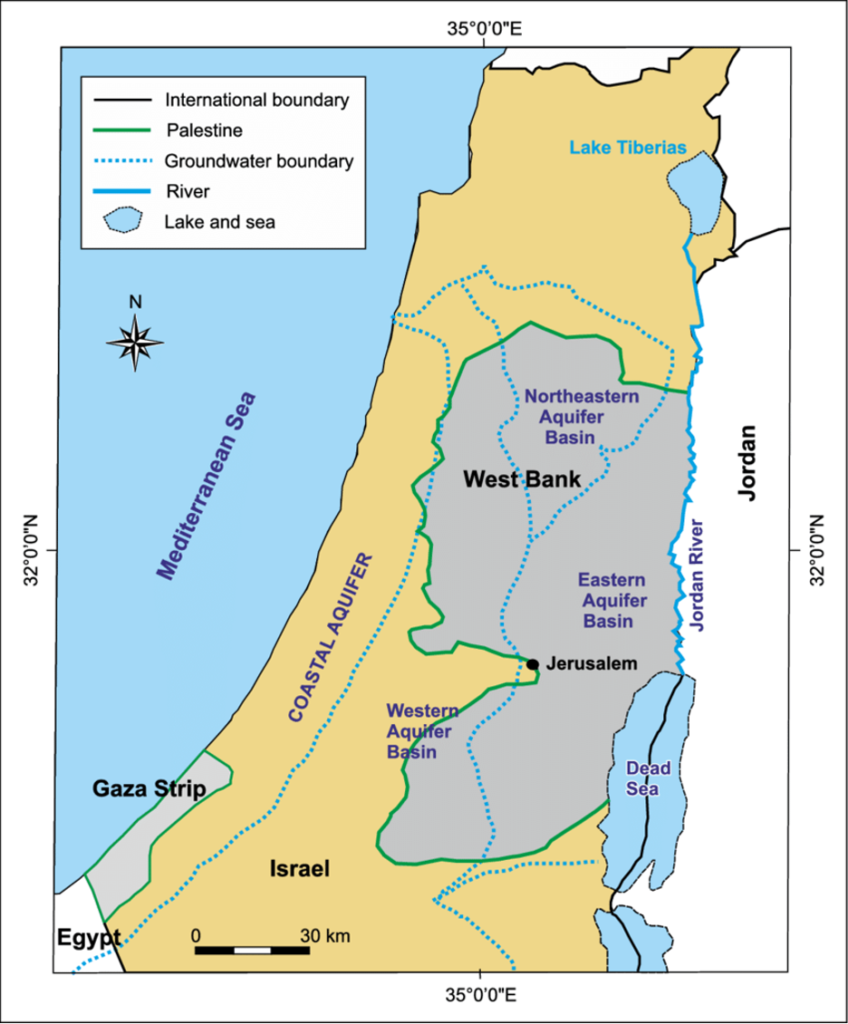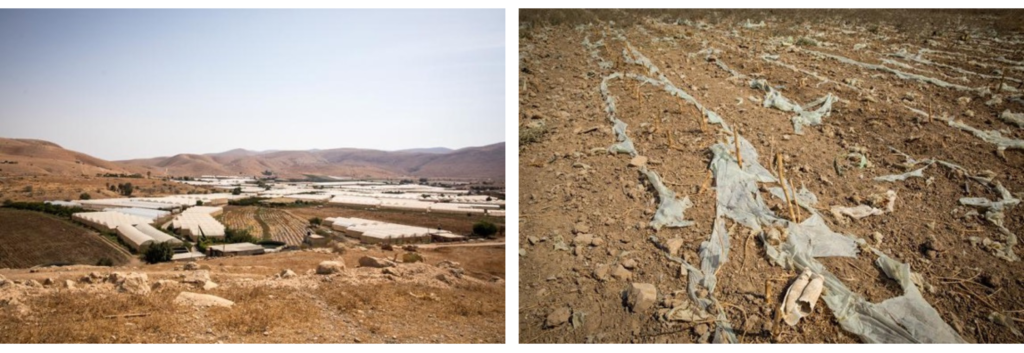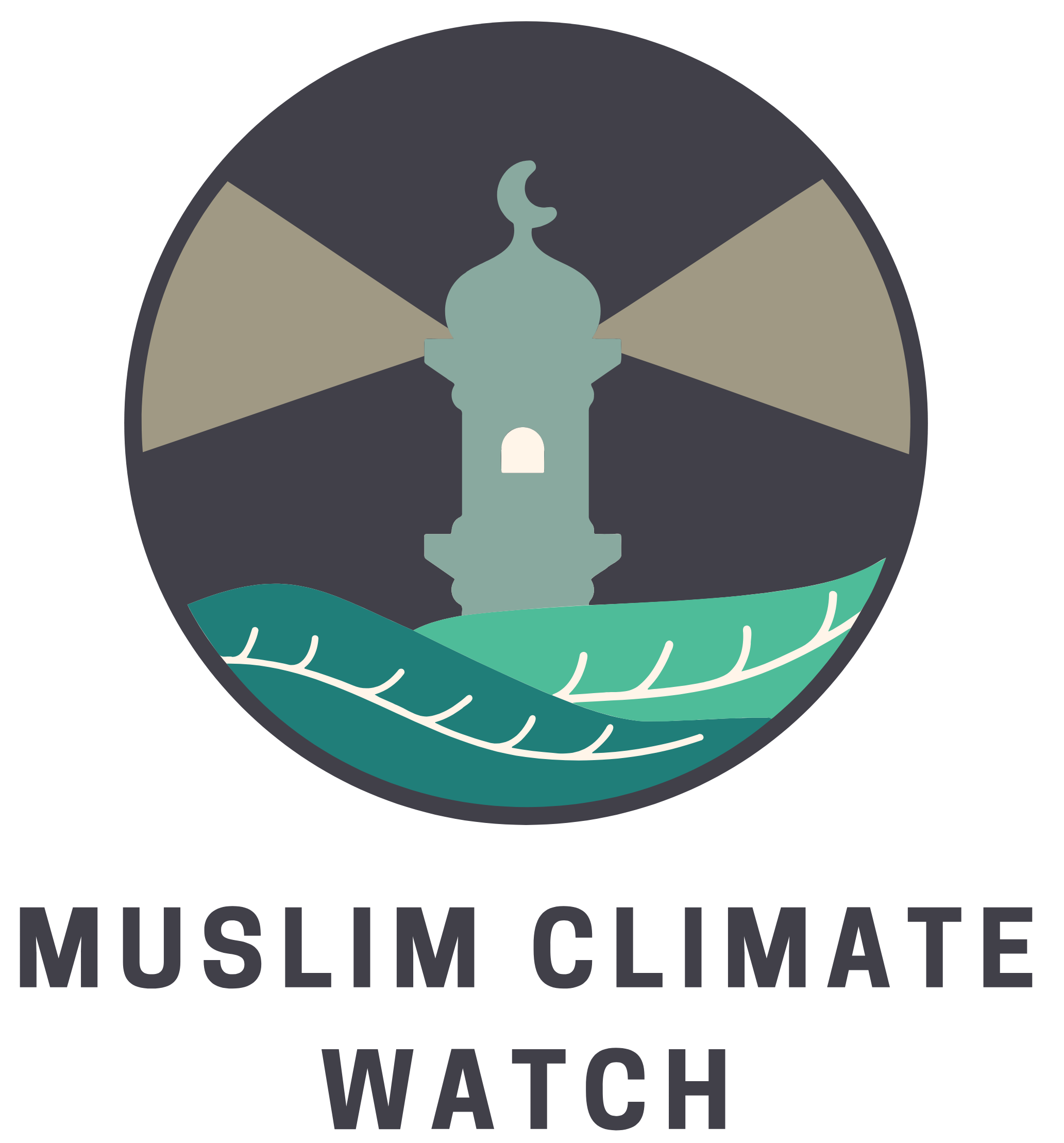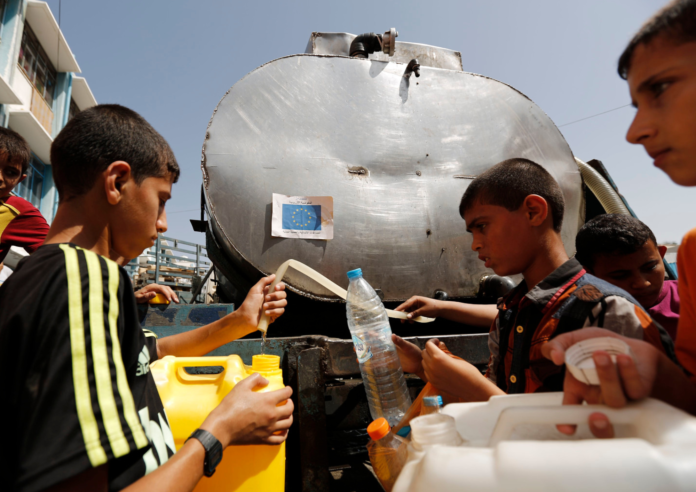The Palestinian water shortage is a deliberate outcome of Israel’s occupation and appropriation of Palestine’s water resources. Israel employs policies of apartheid to control the Palestinian population’s access to water, while Israeli citizens continue to live with an abundant water supply. Israel’s complete control over water transportation hampers the development of a self-sufficient Palestinian water sector, rendering Palestinians entirely dependent on Israel.
Palestinians suffer from extreme water shortages due to discriminatory Israeli policies, which include restrictions on drilling new water wells, installing pumps, or deepening existing wells without Israeli permits. Additionally, they are denied access to the Jordan River and freshwater springs and face discriminatory regulations on rainwater collection and harvesting.
Policies of Water Apartheid
Israel imposed stringent bans and restrictions on the Palestinian water sector immediately after its occupation of the West Bank, including East Jerusalem, and the Gaza Strip in June 1967. The Israeli military authorities centralized full control over all water resources and water-related infrastructure in the Occupied Palestinian Territories (OPT). In November 1967, Military Order 158 was issued by Israeli authorities, mandating that Palestinians must obtain permits from the Israeli army to construct any new water installations. Palestinians were then obligated to seek Israeli permission to drill new wells. However, such permits were granted sparingly which intensified the difficulties faced by Palestinians in accessing water resources.
Joint Water Committee
The Joint Water Committee (JWC), established under the Oslo Accords, oversees water resource management in the West Bank. Established for a five-year interim period that was supposed to end in 1999, the committee continues to date due to the absence of a permanent status agreement for the OPT. It oversees water resource management in the West Bank, excluding the Jordan River.
Read More: Seeds of Resilience in Palestinian Agriculture
Obtaining approval from the JWC is just the initial step for Palestinians undertaking water projects in the West Bank. The three zones of the West Bank, Area A, B and C were established after the Oslo Accords, with Area C being contiguous and covering over 60% of the West Bank. Following JWC approval, additional permits from the Israeli army are required before commencing any work in Area C.
Many applications are rejected, delayed, or simply ignored for days. Even with permits, the execution of work hinges on the Israeli army’s evaluation of “security considerations” in the specific location. Areas can be restricted to Palestinians for hours to weeks or longer, based on the Israeli army’s obscure security assessments. For example, repairing pipes connecting various sections of Area C and linking villages to wells necessitates obtaining separate permits for each area. The execution of this work is contingent on the Israeli army’s assessment of the so-called security considerations in the planned areas. Initiating such projects without prior approval leads to their suspension or demolition by the Israeli army.
Israeli-Palestinian Interim Agreement
In 1995, Israel and the Palestinian Liberation Organization (PLO) signed the Israeli-Palestinian Interim Agreement on the West Bank and the Gaza Strip, however, it failed to adequately address the Palestinians’ needs. Since the signing, Israel has extracted up to three times the amount from the Eastern Aquifer than initially agreed upon. In contrast, Palestinian withdrawals from the Eastern Aquifer have decreased, dropping from 138 million cubic meters (MCM) to 84 MCM in less than a decade. This decline is partially attributed to a decline in the water table potentially influenced by excessive Israeli extraction.
Read More: Climate Oppression, Eco-Apartheid & Palestinian Occupation
A major flaw in the Interim Agreement is the false equivalence of power dynamics between Israel and the Palestinians, with a complete disregard for the reality of Palestinian occupation. The agreement uses language suggesting two analogous water sectors—one Israeli and the other Palestinian—creating an illusion of joint monitoring and sharing of resources between the Mediterranean Sea and the Jordan River.

While limiting Palestinians’ access to water, Israel has actively expanded its own water infrastructure and network in the West Bank to serve its citizens both in Israel and in settlements despite being illegal under international law. Mekorot, the state-owned Israeli water company, has systematically drilled wells and tapped springs in the occupied West Bank to provide water for domestic, agricultural, and industrial purposes, including to Israeli settlers residing in illegal settlements.
Consequences for the Palestinian Community
As many as 180 rural Palestinian communities lack access to running water. Similarly, up to 97% of the water supply in Gaza is heavily contaminated. Numerous Palestinian communities in the West Bank are compelled to buy water from mobile trucks operated independently by Palestinians, accruing heavy costs. In some impoverished communities, water expenses can constitute up to half of a family’s monthly income. Moreover, Palestinian farmers have been forced to constantly vary their crops due to a lack of sufficient water supply.
Read More: Israeli Bombs Pushing Towards Climate Devastation


Breach of Agreements
Most of the arrangements stipulated in the Interim Agreement have not been implemented to this day. Almost 30 years after the agreement was signed, the Palestinians are still not able to pump the agreed amounts of water. Additionally, the JWC has become a tool for promoting Israeli interests only, whereas the failure of the Interim Agreement to ensure joint supervision and enforcement of water resources has left Israel with the sole enforcement powers.
The contrast between the water supply enjoyed by Israeli citizens and the deliberate shortages imposed on Palestinians exposes a system of inequity and apartheid faced by Palestinians under Israeli occupation. Israel’s unilateral control over Palestine’s water resources, coupled with a failure to uphold agreements, perpetuates a cycle of hardship for Palestinians. The water crisis not only reflects the power imbalances inherent in Israel’s occupation of Palestine leading to decades of conflict but also underscores the urgent need for international intervention to end the occupation, policies of apartheid and a reassessment of agreements to ensure a just and sustainable water distribution system in the region.



